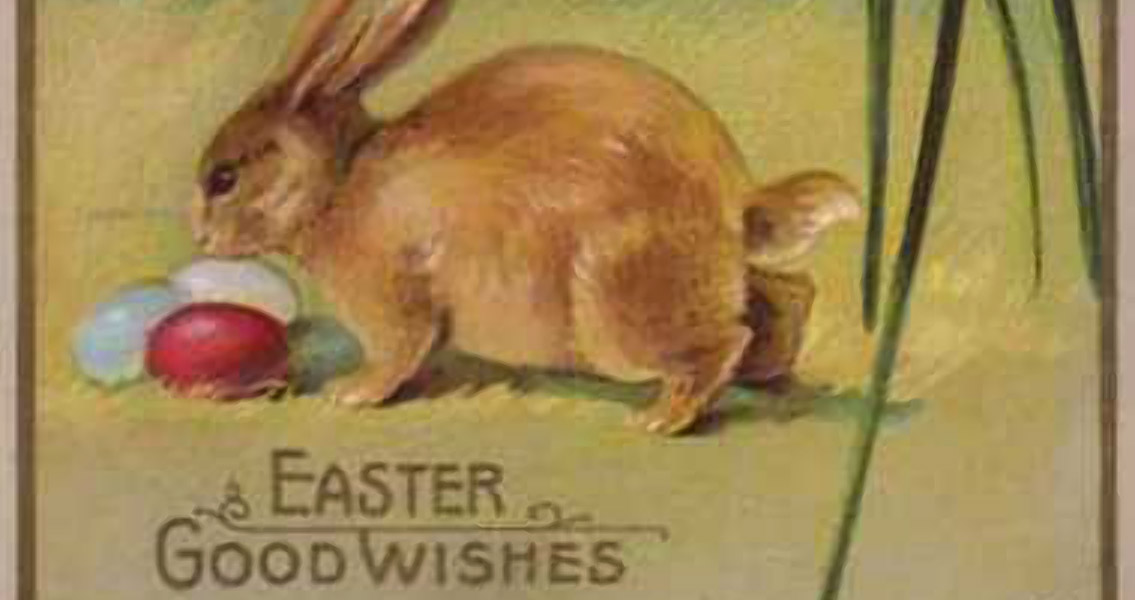<![CDATA[Easter commemorates the death and resurrection of Jesus Christ. An annual holiday which changes date based on lunar cycles, it has become increasingly detached from Christian symbolism. The culmination of the religious season of Lent, while also representing the key Christian idea of Christ's resurrection, it is often regarded as the most important celebration on the Christian calendar. The biblical imagery associated with the holiday has largely been replaced with secular figures however, the most prevalent of which is the Easter Bunny. A rabbit delivering eggs has no obvious connection to the biblical story of the resurrection. So where did the Easter Bunny come from? Exact origins for the tradition are shrouded in mystery, but there are a few prominent theories as to how it came about. One explanation traces the bunny's origins all the way back to the pagan traditions of Saxon northern Europe. It is widely believed that the word 'Easter' derives from the Saxon goddess of spring and fertility, 'Eostre'. Eostre was honored by a festival around the Spring Equinox, which celebrated her life as well as the end of winter, and the rebirth associated with spring. Many believe that ultimately, modern Easter celebrations can be traced back to the pagan celebration of Eostre. The fact she was often represented by images of rabbits or hares could therefore explain how bunnies entered into the imagery associated with spring festivals of life and renewal. Sometime in the 1600s, a more direct ancestor of the Easter Bunny was born in 'Oschter Haws', a German tradition about a rabbit which laid eggs and delivered them to children at Easter. Crucially, this fairy tale marked the first time that stories of a bunny were reconciled with Christian traditions and absorbed into the imagery of Easter. Children in Germanic cultures of the time would build 'nests' outside their houses as Easter Sunday approached, for the bunny to lay its eggs in. These eggs were taken as symbols of Christ's resurrection. In the 1700s, Oschter Haws arrived in North America with Dutch and German settlers to Pennsylvania. The tradition of rabbits delivering eggs continued, and evolved, the eggs becoming painted, and eventually supplemented with chocolate and candy. Much like how children often leave food for Santa's reindeer on Christmas Eve, carrots and other vegetables started to be left in the rabbits' nests as a gift to the Easter Bunny. Of course, nowadays most Easter Bunnies are of the chocolate variety, and this is also a tradition which originated in what is now Germany. Oschter Haws pastries became popular in the region in the 1800s. In the 1890s sales of chocolate bunnies started to rocket in the USA, when Pennsylvanian shop owner Robert L. Strohecker erected a five foot chocolate Easter bunny as part of his holiday promotion. The first references to the 'Easter Bunny' came in 1900, in advertising campaigns in the US. Through the twentieth century the character and associated traditions of chocolate eggs were evolved by marketing departments. Increasingly elaborate chocolate products hit the shelves at Easter, and the idea of the Easter Bunny developed into something distinct from both its Christian and its pagan background. ]]>
Where Did the Easter Bunny Come From?
